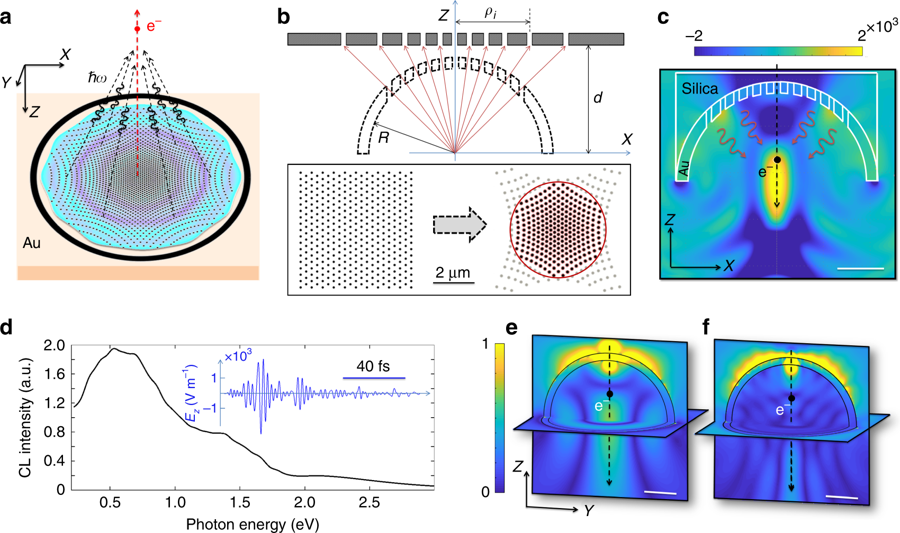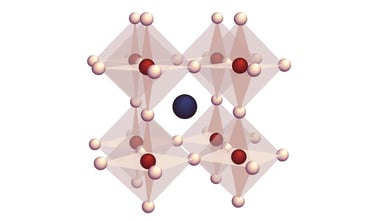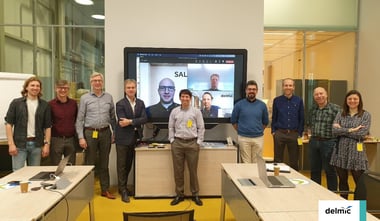The research was done by scientists from the Max Planck Institute for Solid State Research in Stuttgart, AMOLF, and the University of Stuttgart. The study combines optical modelling and design of a plasmonic metasurface lens, with electron energy-loss spectroscopy (EELS) and cathodoluminescence (CL) experiments to characterize its properties. The experiments demonstrate that such surfaces can be used in the future for hybrid pump-probe experiments and/or spectral interferometry.
A mesoscopic structure composed of an array of nanoscale holes in a gold film was designed using transformation optics. When excited by electrons, this structure acts as a very particular electron-driven photon source (EDPHS). The work shows that this metalens can be tuned to give a particular polarization state, illumination angle, and focal length for electron beam illumination. The designed EDPHS was subsequently loaded inside a transmission electron microscope and inside a scanning electron microscope to determine its nanoscale optical properties. In particular, electron energy-loss spectroscopy and angle-resolved cathodoluminescence were used respectively. The CL measurements were performed on the SPARC cathodoluminescence detection system. Based on the results, the authors expect a wide range of applications in electron-photon microscopy and spectroscopy, as well as electron-based spectral interferometry.
If you are interested, read the full article here. We are regularly posting news on the most interesting papers in the field, so if you want to stay updated, subscribe to our newsletter.
.png)






